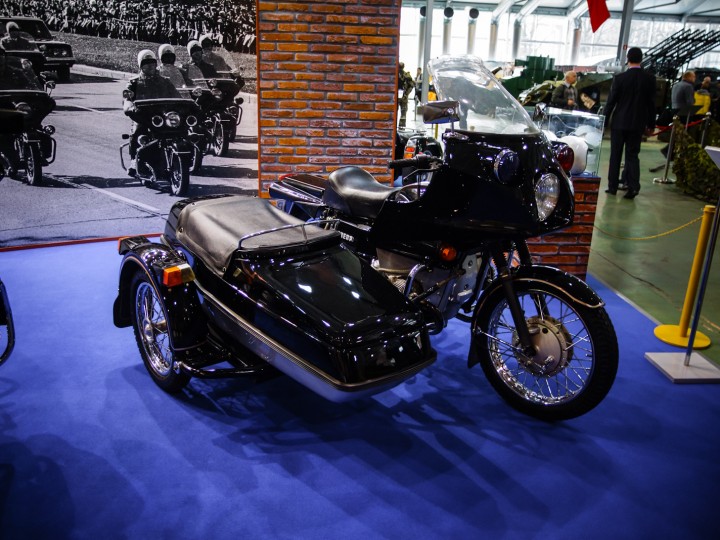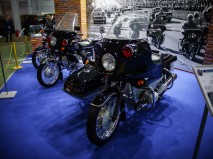1989 Dnept 14.9M
In the summer 1987 the construction of the model M bikes was refined and two more motorcycles Dnepr-14.9M were produced at the KMZ, this time for the acceptance trials, which took place in the autumn of the same year. On 4 December, 1987 the inter-departmental commission having noticed the advantages of the new motorbike over the existing one …did not admit it for production. The customer demanded to augment the driver’s protection, the air cleaning and noise silencing systems, to alter the sidecar construction, clench the matter with a winter tire of the front wheel, which held the road not sufficiently well and include the section “Technology of diagnosis and regulation of escort motorbikes Dnepr” into the Maintenance Manual.
During the winter of 1987/88 these demands of the customer were fulfilled. And already in March of 1988 the customers tested two improved samples of the motorcycle Dnepr-14.9M with various options of painting, plating coatings and a new sidecar. This time the bikes got a positive evaluation and after the approval of the painting and plating coating versions the motor plant set about the production of the batch comprising 25 motorcycles Dnepr-14.9M.
The motorbike began to look more up-to-date, as it received a new air cowl, a wind-shield with a rain visor and a tail assembly, a front fork, front safety rails, a side stop and a supporting block. The wheels, the steering wheel, the dashboard with a clock, an ampere-meter and a redesigned tachometer and speedometer were new too. The engine on the model M bike differed from its predecessor, which was improved by All-Russian Research Institute of Motor Industry. To enhance reliability and durability of the motor some reinforcement ribs were added on its case and it was pinned to the steel body cover of the front bearing. The motorbike’s undercarriage was lightweight and modified to amend its handling and stability. The telescopic fork of the front wheel with weak forces of friction and an improved shock eliminator became of more rigid structure, and its offset reduced down to 125 mm for better handling.




